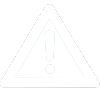In week one, George will introduce you to the world of sequential art and comics. You will learn his philosophy to sketching and how that informs your creativity and visual vocabulary. George will show you his cover pages and layouts for some of his most iconic projects.
In week two, George will share with you the layouts and thought processes behind some of his most iconic graphic novels. You will learn about George’s journey while working in the industry; that includes the lessons he has learned and the scenarios that inspired his graphic novels.
In week three, George will introduce you to a variety of tools and techniques to practice in your sketchbook. You will learn about the importance of sketching to improve your confidence, and from there, develop convincing visual languages.
In week four, you will learn the importance of gathering references for your sequential art. George will go through his library of images to show you how he utilizes them for his visual storytelling.
In week five, George will lecture on some of the greatest photojournalists. You will learn about well-known photographers across the globe that document the life around them and successfully tell stories through their photography.
In week six, George will teach you the different elements used on a page of sequential art. You will learn the vocabulary used when breaking down a comic book page. You will study how to arrange panels on a page and use software like Comic Life 3 to play with styles of panels and speech bubbles.
In week seven, George will lecture on the types of shots used in comics. You will learn about different camera angles for telling a story and the double-page spread. George will touch on the importance of gestures when illustrating comics. You will learn how tangents affect the readability of your panels, and more importantly, your pages.
In week eight, George will address the significance of developing layouts for your sequential art. You will learn how layouts influence the scale and composition of your panels.
In week nine, you will learn the key principles of a comic page. George will lecture on the readability of panel arrangements. You will examine how lettering, word balloons, and sound effects operate in comics.
In week ten, George will teach you how to choose the right moment to illustrate. You will learn to select the best snapshot of an action that represents the overall narrative. George will lecture on the strategies for penciling your final composition and explain how that image moves on to get inked.
In week 11, you will learn how to utilize photo reference in your sequential art. George will show you how the master illustrators used photo references as a tool to help tell the story. Then, George will share with you some photoshoots he produced throughout the years to gather references for his illustrations.
In week 12, George will lecture on the fundamentals of cover art. You will learn all the technical aspects of the page and examine how different artists illustrated comic covers. George will analyze the different styles of making comic books.
Common Questions
This course is appropriate for intermediate levels. However, any level would benefit greatly from the core principles of sequential art taught in this course.
This course includes downloadable assignment PDFs, that help you practice the materials taught by instructor George Pratt. Keeping up with these assignments will maximize your learning outcomes.
A material PDF list is linked in each lesson under the description. Please check the file to see what you need to prepare.
Although we highly recommend that you use traditional materials for this course, all New Masters Academy courses are designed to be done traditionally or digitally. Software changes constantly, but the fundamentals stay the same. It will be up to you to translate the information that you are learning to your software of choice.

 UPDATE! October 1st, 2023: This version of the website will no longer receive updates. Please transition to the new website for the best experience.
UPDATE! October 1st, 2023: This version of the website will no longer receive updates. Please transition to the new website for the best experience. 











CONNECT
New Masters Academy
16182 Gothard St
Huntington Beach, CA 92647
Contact US